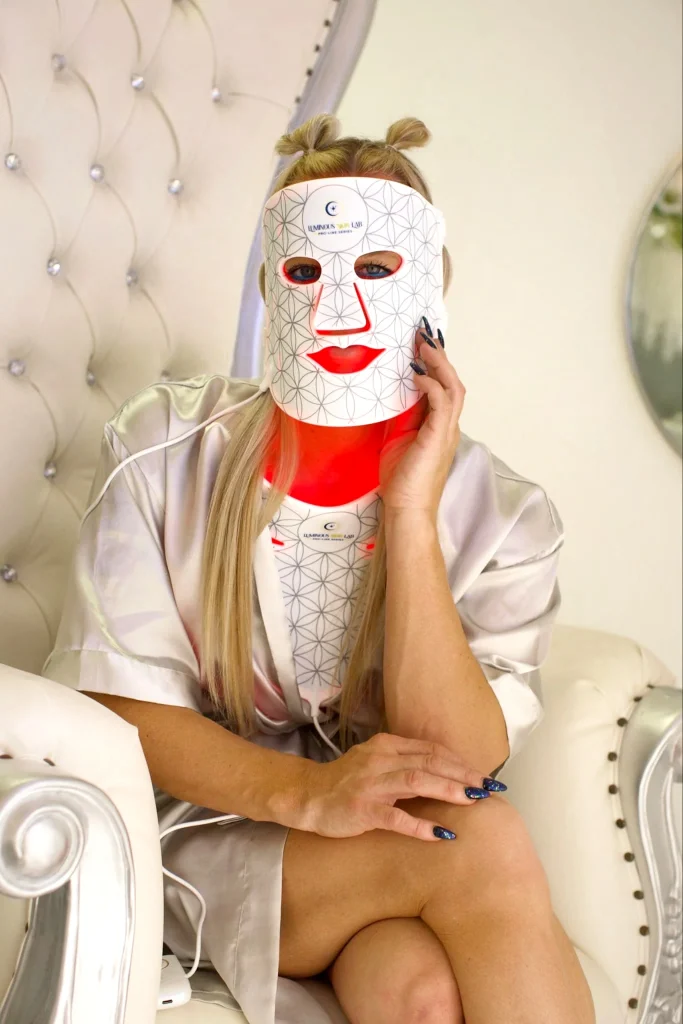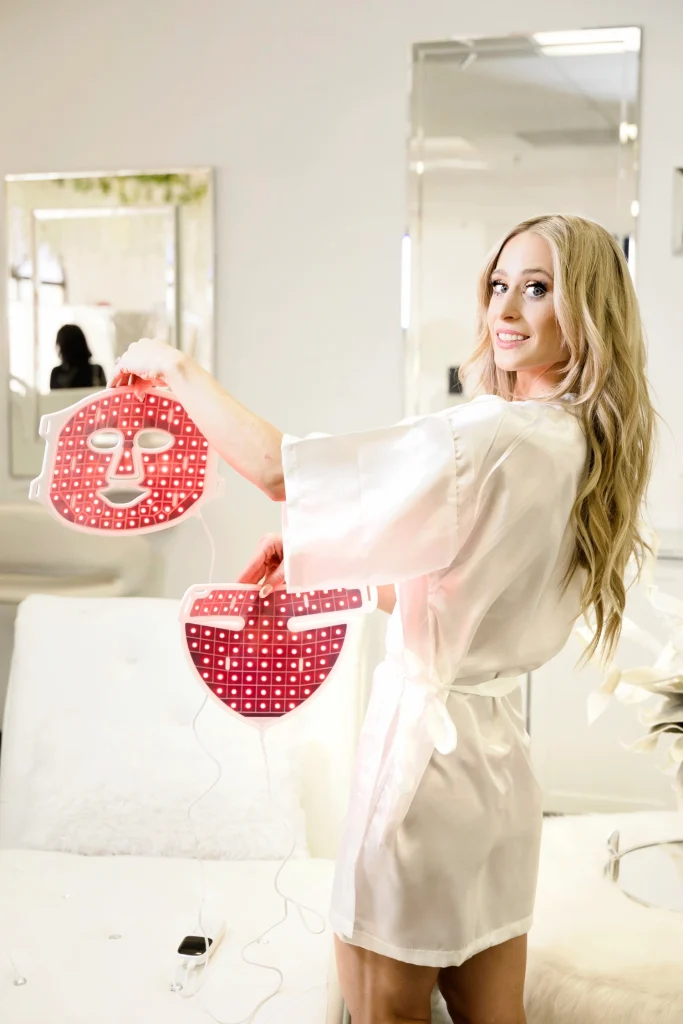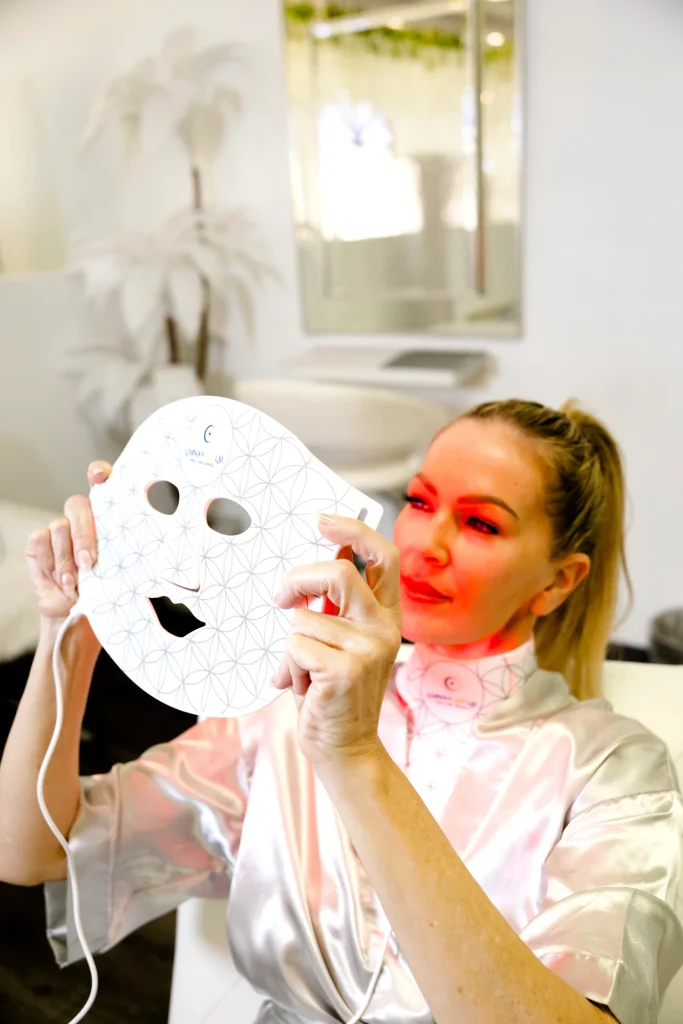Light-based skincare sounds simple — until you realize how many types exist. Red light, infrared, LED. All of them promise healthier skin. However, each one works differently. It’s easy to mix them up, especially when many devices combine them.
What is the key difference between red and infrared light therapy?
Red light targets surface-level rejuvenation. Infrared reaches deeper layers to improve circulation and repair tissue. Together, they form a powerful duo for skin renewal.
Discover how each wavelength interacts with the skin, the results it produces, and how to select the best home device for your skincare routine.
Understanding Light Spectrum and Wavelengths
Each wavelength reaches a different skin depth and creates its own type of change. Once you see how far each goes, the reason for their combination makes sense.
Red light therapy falls between 630 and 660 nanometers. It stays close to the surface. This is where fine lines, uneven tone, and texture appear. Red light helps your cells make more collagen. It keeps skin firm and smooth. It also adds brightness and supports the overall tone.
Near-infrared light reaches further. At 850 to 900 nanometers, it travels below the surface into deeper tissue. It improves blood flow and supports repair. It also calms inflammation and strengthens the layers that keep skin elastic.
LED technology is a safe delivery system. The light-emitting diodes release specific wavelengths without UV rays or heat.
That’s why red light therapy masks are gentle enough for daily use. Many combine red, blue, amber, and near-infrared light to treat multiple layers at once. Together, these wavelengths boost cell energy and trigger natural renewal. Light doesn’t just refresh the surface. It helps revitalize your skin with photobiomodulation skincare.
| Light Type | Depth | Main Benefits |
| Red | Outer skin layers | Collagen, fine lines, tone |
| Infrared | Deeper tissues | Healing, repair, circulation |
| LED | Multi-spectrum | Safe, even light delivery |
What’s the Difference Between Red Light and Infrared Therapy?
Red light works where you can see it. It targets the outer layers of your skin. This wavelength encourages collagen production. It gives your complexion a fresh, healthy glow.
Infrared light helps blood flow and supports the skin’s regeneration. In addition, it can ease minor inflammation and help the tissue recover from daily stress. You don’t notice its effects instantly on the surface. It also strengthens your skin’s foundation over time.
The main difference is depth. Red light focuses on appearance. Infrared focuses on recovery and resilience. One improves what you see in the mirror. The other improves what’s happening underneath.
To make the most out of your sessions, you can use devices like the ILUMILUX FDA-cleared red light therapy mask to give your skin a full workout. You get instant surface radiance from red light and lasting strength from infrared.
Benefits and Applications for Skin Health
Each light wavelength offers its own kind of skin boost. Red, infrared, and LED systems all target different layers. When used together in a red light therapy mask, they create visible and lasting improvement.
Research by Lee S.Y. et al. (2007) in Photomedicine and Laser Surgery and findings in the Journal of Clinical Medicine (2020) have shown how varying depths of light wavelengths impact skin regeneration, improving texture, elasticity, and overall skin health. Here’s a quick breakdown:
- Red Light (630–660 nm)
This wavelength focuses on the visible surface of your skin. It boosts collagen, the protein that keeps your skin firm and plump. With steady use, red light helps reduce the appearance of fine lines and improves wrinkles. It also supports a more even tone. It encourages gentle renewal of skin cells and gives your complexion a brighter, more refreshed look. Dermatology studies have shown that red light can enhance elasticity and make mature skin appear visibly smoother without any irritation.
- Infrared Light (850–900 nm)
Infrared supports your body’s natural healing process, increases circulation, and helps bring oxygen and nutrients to the skin. This deeper activity strengthens the skin barrier, improves elasticity, and reduces inflammation that can lead to dullness or puffiness. It’s also known to ease minor swelling or redness. It helps your skin recover from daily stress or mild irritation.
- Multi-LED Systems
Some advanced devices, like the best LED mask for anti-aging, use a mix of several wavelengths — red, blue, amber, and near-infrared — to cover every skin concern at once. Blue light targets the bacteria that cause acne and keeps breakouts under control. Amber light calms redness and evens out tone, especially helpful for sensitive or reactive skin. Near-infrared reaches deeper tissues to enhance repair and keep the skin strong from within. When these lights work together, they support total rejuvenation.
Which Type of Light is Best for Anti-aging or Acne?
For anti-aging, a quick look at red light therapy vs infrared shows that both are essential. Red light focuses on the skin’s surface, where it helps your body create more collagen. With regular use, fine lines start to soften and your skin tone looks smoother. Infrared supports circulation, boosts elasticity, and strengthens the skin from within — the kind of change that gives the face a firmer, more lifted look over time.
When it comes to acne, the best results usually come from combining blue and red light. Blue light works on the bacteria that cause breakouts, cutting them off before they can spread. Red light steps in to calm irritation, reduce redness, and help the skin recover after a flare-up. When combined, they clear existing blemishes and make future breakouts less likely.
If you want all-around skin improvement — fewer wrinkles, fewer spots, and a healthier glow — a device that mixes several wavelengths is the smartest choice. That’s exactly what the LED red light face mask does. It brings red, infrared, and amber light into one system, so you don’t have to choose between anti-aging and acne care.
Choosing the Right Technology for Home Use
It’s not easy to find the right light therapy device. Every brand promises results, but not all of them are built for everyday use — and even fewer are made with real comfort or safety in mind.
When you’re using something on your skin regularly, the experience matters just as much as the results. The best device isn’t the one with the most buttons or flashy claims — it’s the one you’ll actually want to use comfortably.
Here’s what you should consider:
- LED panels. Cover large areas like your chest or back. Good for multitasking, but they take up space and don’t contour to your face.
- Handheld devices. Work well for spot treatment. The downside — you have to hold them in place, which gets tiring.
- LED masks. The easiest and most balanced option for home use. You just put it on, press start, and relax while it does the work. It covers your entire face evenly, so no area is missed.
Before you buy, check for these small but crucial details that make a big difference when it comes to sticking with your routine:
- FDA clearance for proven safety. You can verify device safety classifications through the FDA database;
- wavelength details that are listed on the device;
- comfort features such as soft straps, lightweight and no heat buildup.
The ILUMILUX red light therapy mask checks all of these boxes. The design is comfortable, the security is top-notch, and it delivers even light across your entire face.
Red or Infrared: Which is Better Therapy for Home Use?
Both help your skin — just in different ways. Here’s a quick red light therapy vs infrared comparison:
- Red light targets the surface. It boosts collagen, softens fine lines, and brightens skin tone.
- Infrared light goes deeper. It improves circulation and helps the skin repair itself faster.
If you want healthier, better-looking skin, red light is the way to go — especially for at home. It’s the one that actually makes your face look smoother, brighter and more even without complicated routines or professional equipment.
However, for real, lasting results, you don’t have to pick one over the other. Red light improves how your skin looks on the outside, while infrared strengthens it from within.
The best approach is to use both — they complement each other perfectly. That’s what makes the ILUMILUX LED Mask stand out. It combines red and infrared wavelengths in a single session, treating your skin from every angle.
The red light adds surface radiance, and the infrared handles the deeper repair. Together, they bring out your skin’s natural glow while helping it stay strong underneath.
The American Academy of Dermatology states that FDA-cleared LED masks are safe for home use when used for about 10 to 20 minutes per session.
You don’t need long treatments or special routines. Clean your skin, relax while the mask does its work, and follow up with a good moisturizer. Over time, you’ll start to see subtle but steady changes — smoother skin, better tone, and a natural glow that lasts all day.
Remember that consistency makes the difference. The more regularly you use it, the more your skin responds. That’s the beauty of light therapy — it works with your skin, not against it, helping it look and feel better in a calm, natural way.
Conclusion – One Mask, Full-Spectrum Results
Healthy skin doesn’t come from one wavelength. Red, infrared, and LED work together to renew, strengthen, and protect your skin from the inside out. Each light does its job — red brightens and smooths, infrared restores and repairs, and LED keeps it all balanced.
Best results come from a multi-wavelength device that reaches every layer of the skin. That’s what ILUMILUX by Luminous Skin Lab is. It combines red, amber, and near-infrared light in one FDA-cleared red light therapy mask that gives you clinic-level results at home. You don’t need complicated routines or a million products. Try balanced light. With ILUMILUX, your skin can glow brighter, stronger, and healthier — naturally and easily.
FAQ
No, they work at different depths. Red light focuses on the skin’s surface to boost collagen and even out tone. Infrared light reaches deeper layers to improve circulation and support repair beneath the surface.
Yes, it does — just in a different way. Red light smooths fine lines on top, while infrared strengthens skin from within. Together, they make the skin look firmer and more youthful.
Absolutely. Using both at once gives better results than using either alone. Devices like ILUMILUX already blend these wavelengths, so you get complete rejuvenation without extra steps.
Yes, as long as the device is FDA-cleared and you follow the recommended session time — usually 10 to 20 minutes. The light feels gentle, with no heat or discomfort, making it easy to use at home on a regular schedule.
Of course. Light therapy benefits all skin types and tones. Men see the same improvements in texture, firmness, and brightness — plus it helps calm post-shave irritation and redness.
It won’t replace every in-office procedure, but it delivers many of the same rejuvenating benefits. With regular use, an FDA-cleared mask like ILUMILUX can help maintain results between professional visits.
Yes, always apply sunscreen if you’re going outside. LED light therapy itself doesn’t cause sun sensitivity, but protecting your skin helps preserve your results.
Yes, when used with proper eye protection. The ILUMILUX Mask includes built-in shields to keep the light comfortable and safe during sessions.
No. It doesn’t add pigment. If anything, it helps even out tone and reduce redness or blotchy patches.


